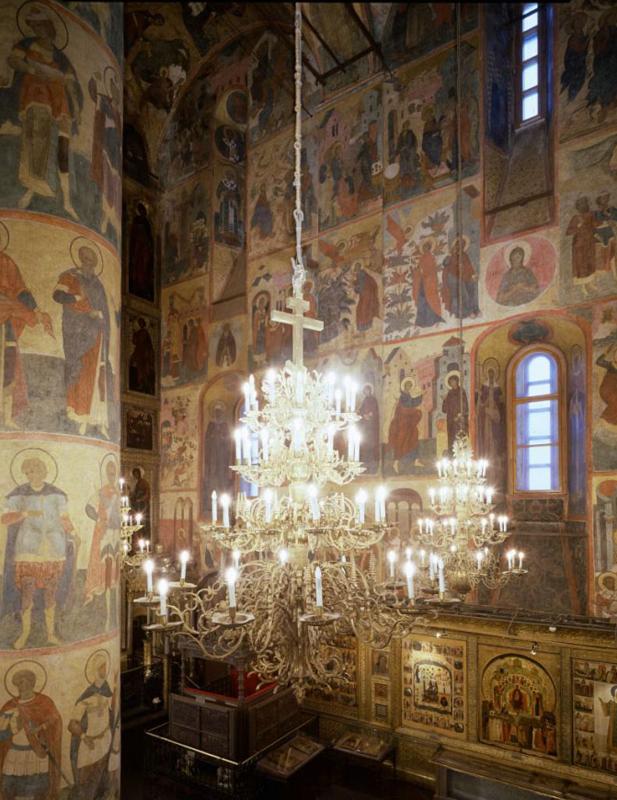LIGHTING
CloseAn important role in the interior decoration of cathedrals has been played by lighting fitting, symbolizing, on the one hand, the divine light, and at the same time, prayer to the Lord. Therefore, usually, Christian churches were filled with numerous lamps. There are many of them in the Assumption Cathedral as well.
In 1644 the Cathedral was decorated with eleven gilded bronze multi-tiered church-chandeliers with baroque style candlesticks and carved large spheres at the base. Five chandeliers with crosses on tops were made at the expense of the Patriarch; the other six with double-headed eagles were made at the expense of the Royal Treasury.
Only these bronze chandeliers remained of the Cathedral’s former magnificent decoration and multicolour glow from various lighting. The Cathedral was robbed of its rich decoration because of Napoleon’s invasion in 1812. Silver and golden utensils which weren’t evacuated from the Kremlin in time, icon frameworks, and precious shrines of Metropolitans were cruelly destroyed and ravaged by interventionists. At the same time, they destroyed a huge six-tired silver chandelier which was brought into the Assumption Cathedral by boyar Morozov in 1666. It had been placed in the centre of the Cathedral against the Holy Gates. A new 328-kilogram silver chandelier was cast in 1817 in the memory of Moscow liberation, from silverware which was loot by the French in Moscow and then recaptured by the Cossacks from the retreating army. It was made by A.Gedlung on the base of K.Rossi’s drawings. The chandelier’s branches with candlesticks are decorated with lily flowers, grape rods, crowned by a wheat sheaf – symbols of communion wine and bread.
In 1914 I.P.Khlebnikov’s jewellery firm made a big pair of twin bronze candelabrums placed at the solea (a podium before the altar or the iconostasis) against the Holy Gates. A niello ‘icon-lamp’ of Patriarch Filaret (made in 1622 and stored in the Patriarch sacristy) served as a model for them, but they were increased almost three times. Candelabrums were decorated with large grass tracery and beads typical for decorating silverware in the 17th century. They perfectly fit into the ensemble of the Cathedral decoration, which was renewed during the restoration of the Church in the late 19th - early 20th century.
Chased silver chain censers of the 17th–18th centuries, now hanging in front of local icons of the main iconostasis, were brought from the Solovetsky Monastery in 1923; some of them remained donation inscriptions.












